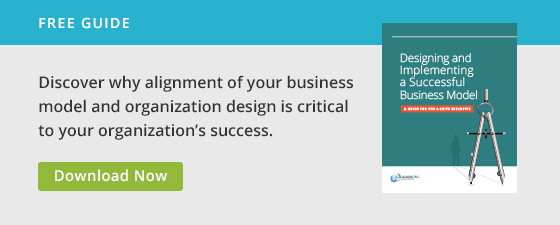With the beginning of a new year, many executives are looking to improve their businesses, their market presence, and their competitive advantage over the course of the new year. This may include changes to strategy, enhancements to organization capabilities, streamlined processes, optimized structures, refined reward systems, new measurement systems, and more. While I don’t want to dampen enthusiasm for these changes and improvements, too often organizations sprint out of the gate following the new year and quickly outpace themselves in the marathon of true organization transformation.
In fact, a marathon is perhaps the best metaphor for true organization transformation. In chapter five of our book, Mastering the Cube, we discuss how the real work of executives is that of an alignment leader. That is, the leader who helps “thoughtfully create and champion organizing choices that enable performance.” In our marathon metaphor, an alignment leader is at the forefront of coaching, training, and ultimately completing an organization transformation marathon. They help the organization improve its overall fitness to reach the marketplace goals that will enable success.
The best alignment leaders know what it will take for their organization to compete in a different way – they understand the transformation journey and how to help members of their organization prepare to compete. Few people could jump off the couch, dust the potato chip crumbs from their shirt, and run a marathon without preparation. And, even if they do complete the race, the chances of them being competitive is null. The same goes for true organization transformation. Sometimes we get lucky despite ill-preparation (especially in times of crisis). However, conscious organization change, with the power to drive lasting marketplace results, most often comes from deliberate preparation and execution much like a seasoned marathoner preparing for and executing a solid race strategy.
To prepare for your organization transformation marathon, consider the steps below:
Diagnosis and Assessment. It is nearly impossible to make organizational changes if you do not know what the problems are in the first place. And, different problems require different solutions to be effective. You would not prepare for a half-marathon the same way that you would a full marathon or an ultra-marathon, would you?
Performing a diagnosis and assessment of the organizational capabilities and/or issue(s) before starting an organization transformation is essential. You might think of this like going to your doctor to get a physical before running your race. You need to know where you’re at, your strengths, and your deficiencies before you can move forward.
Strategy. Once you’ve diagnosed your capabilities and identified any issues, you need to articulate how you intend for the organization to win in the future. This is much like creating a training plan, setting a diet, and perhaps even hiring a coach to help you prepare for the marathon. This strategy should answer questions such as: How will you be successful in the marketplace? How will you differentiate yourself from your competitors? Can you anticipate any significant marketplace changes and get ahead of them?
By having specific, focused goals for the future, you can identify the organization capabilities necessary to make the goal a reality.
Macro Design Alignment. This is when you create or redesign an organization’s operating model to execute your strategy. Essentially, this is when you start training for your marathon. Macro design makes high-level decisions about the organization, determines the capabilities necessary to execute the strategy, and usually happens at the senior leader level of the organization.
The best macro designs consider all aspects of an organization (processes, structure, metrics, people/rewards, leadership/culture, continuous improvement), ensure organizational alignment, and demand rigorous trade-offs. Much like starting a new training program, macro design can be demanding and create sore muscles. However, cutting corners in the beginning can have disastrous consequences if the organization design is to be successful.
Micro Design Alignment. At this stage, the design is refined by other members of the organization that have deeper knowledge of specific functions. This often occurs at a manager level with a senior leader sponsor and is primarily focused on execution rather than strategy. The team validates the macro design and refines where necessary to allow the design to be successful at the functional levels of the organization. In essence, this is where marathoners add some cross-training into their regiment and further refine and hone their fitness in preparation for the race.
Implementation. This is the marathon itself. With a sound organization design that leaders at different levels have refined to the best of their abilities, it is time to launch the new strategy and organization design and implement it across the organization. The plan may be bumpy at first, but with each mile the organization settles in, relaxes, hits its stride and executes.
Although some organizations luck out from time to time and finish an organizational transformation marathon with no preparation (or last-minute preparations), their results rarely have the permanence and robustness of a conscious, deliberate plan. What’s more, structured organization changes, especially those using a change partner, can eliminate much of the pain, wasted energy, and costs often associated with less structured organization transformations.
If you have an organizational transformation on the horizon for this year, consider your approach: do you plan to jump off the couch and attempt a marathon, or are you executing a deliberate plan that will enable you to become competitive in the marketplace?






